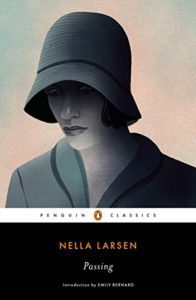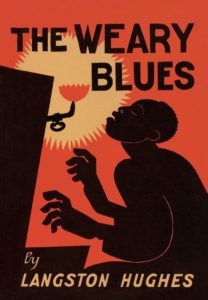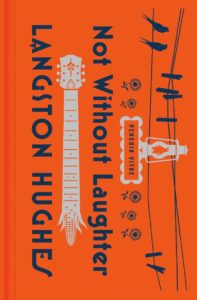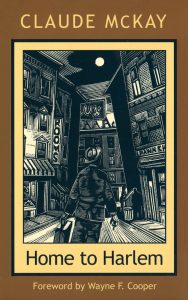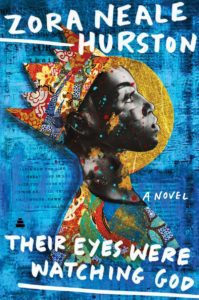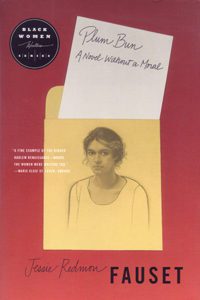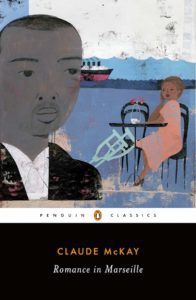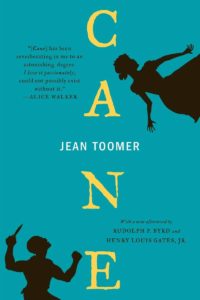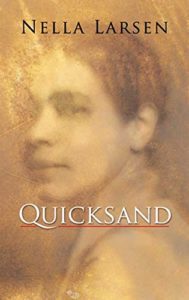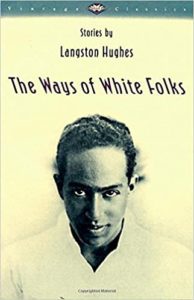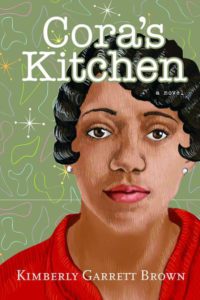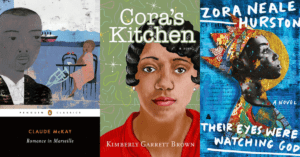
My love for history started in sixth grade when I became fascinated with the feudal system of the Middle Ages. The lifestyles, culture and significant events of the past really ring my bell. In fact, if it hadn’t been for one extraordinarily boring professor my freshman year at Michigan, I would have majored in history. Alas, it wasn’t to be.
Instead, I became a psych major and satisfied my interest in the past by reading historical fiction. But as a Black woman, I often found myself discouraged and sad whenever I read novels set in the eighteenth or nineteenth century about characters who looked like me. It was hard not to internalize the inhumanity of racial injustice. Continuously reading about Black people overcoming and surviving just to live is tiresome, especially since so much of Black life is a continuing battle against racist ideology. I longed for stories of hope. I decided, just as Toni Morrison’s famous quote suggests, to write the novel I wanted to read.
I found myself drawn to the 1920s when Black creativity and innovation was hot. The Harlem Renaissance was a cultural movement designed by Black intellectuals, such as W.E.B. Dubious and Alain Locke, to elevate the perception of Black people. They believed art would change the old stereotypes of Black people to reflect the assertiveness and self-confidence of the “New Negro.” The thought being, if they changed how white people perceived Black people, it would prove the Negro worthy of being accepted fully as an American citizen.
The Harlem Renaissance ushered in the rise of Black authors such as Langston Hughes, Zora Neale Hurston, Claude McKay, Countee Cullen, and Nella Larsen. They each gave voice to what it means to have hopes and dreams while living with the pressures of racism. They became my ancestral mentors as I ventured to write a hopeful story about a Black woman in the 1920s who dreamed of being a writer.
Each book that I have chosen for this list helped me to celebrate Black creativity and to write with power about what it means to be Black woman with a dream.
***
Passing by Nella Larsen
I happened on this book by chance browsing through the shelves of the college bookstore where I taught. I was intrigued by its focus on two themes that are rarely written about: the Black bourgeoisie and passing (a term used when a fair-skinned Black person allows white people to assume he or she is also white). Irene Redfield and Clare Kendry are childhood friends who meet after years of separation at Chicago hotel. Irene, though fair-skinned and able to pass, is married to a successful Black doctor. Clare has spent her life passing and is married to a racist white man who doesn’t know she is Black. The complexity of Larsen’s writing blew me away. It made me more curious about the Harlem Renaissance. Larsen was the first Black women to receive a Guggenheim Fellowship in 1930, and the book has recently been adapted into a film by Rebecca Hall.
The Weary Blues by Langston Hughes
No Harlem Renaissance literary list would be complete without including Langston Hughes’s debut poetry collection, published in 1926. The title poem won best poem of the year in Opportunity, the Urban League’s magazine, in 1925. It’s an American classic that includes “The Negro Speaks a River,” “Dream Variations,” and my personal favorite, “Mother to Son.” I marvel at how each poem encapsulates the essence of what it means to be Black in America in a way that still applies today. The poem, “Troubled Woman,” inspired the main character of Cora’s Kitchen, my debut novel.
Not Without Laughter by Langston Hughes
I have to also include Langston Hughes’s first novel on this list. Hughes noted in his autobiography that his goal for the novel was to write about a typical Black Midwest family. The book opens with a grandmother standing in her doorway looking out into the world. She is between the safety of her home and the danger of the elements. The scene sets the framework for the figurative storm her grandson will experience when he crosses the threshold and is awakened to the sad and the beautiful realities of Black life in the early twentieth century. Not Without Laughter is a manifestation of Hughes’s belief that young writers have a responsibility to express themselves without fear or shame.
Home to Harlem by Claude McKay
Claude McKay was a poet and best known for his poem “If We Must Die” famously quoted by Winston Churchill (though he never gave McKay credit). Home to Harlem reflects the alienations and frustrations of urban Blacks as it tells the story of an army deserter and a college educated Haitian immigrant who both search to find their place in a society plagued with racial prejudice. Though it was a best-seller during the 1920s, it was an embarrassment to the Black elite. W.E.B. Dubois remarked that he felt unclean when he read it. While it feels at times as if McKay is struggling with point of view, the novel includes a powerful metaphor about how the Black community associates skin color with beauty.
Their Eyes Were Watching God by Zora Neale Hurston
Though out of print for nearly thirty years after its first publication, Their Eyes Were Watching God is one of the most widely read and highly acclaimed novel in Black literature. Hurston’s powerful use of extended metaphors, imagery and symbolism allowed her to create a story that neutralized race issues in order to examine feminist ideals and desires more fully. Their Eyes Were Watching God is the story of Janie Crawford’s search for self-actualization and sexual freedom. Janie’s strength and independence has inspired Black women throughout the twentieth century. I absolutely love the opening paragraph: “Ships at a distance have every man’s wish on board. For some they come in with the tide. For others they sail forever on the horizon, never out of sight, never landing until the Watcher turns his eyes away in resignation, his dreams mocked to death by Time. That is the life of men.”
Plum Bun: A Novel Without a Moral by Jessie Redmon Faust
Jessie Redmon Faust is often referred to as the midwife of the Harlem Renaissance. As the literary editor of The Crisis magazine from 1919 to 1926, she helped to promote the careers of many prominent male African American authors including Langston Hughes, Jean Toomer, and Claude McKay. Plum Bun, considered her best novel, is romantic story about a young middle-class Black woman who frequently passes for white to access the opportunities she believes her own race is denied. Though the writing isn’t as strong as its contemporaries, it illustrates how skin color affects opportunities, as well as the depth of racial discrimination. Plum Bun helped me understand the constraints my protagonist would face as a darker-skinned woman.
Romance in Marseille by Claude McKay
Published for the first time eighty-seven years after it was written, Romance in Marseille is, in my opinion, much more interesting than Home to Harlem. Though it also centers around a troupe of vagabonds, there are fewer abhorrent acts of racism. The story takes place along the coast of France in Quayside. Lafala, a West African sailor, has had his frostbitten legs amputated and wins a successful lawsuit case against the shipping line that locked him in a frigid closet for stowing away on their ship. He returns to France and to the prostitute who had previously stolen all his money. The novel’s themes of socialism, sexuality, queer identity, and Black diaspora were too risqué for editors and publishers of the 1930s but remain relevant almost ninety years later. I love the diversity of characters in terms of ethnicity, political beliefs, and sexual orientation. I especially love that McKay explored women’s sexuality beyond serving men.
Cane by Jean Toomer
Cane was the first literary achievement of the Harlem Renaissance. It depicted Black life during the 1920s through poetry, stories and sketches. My favorite in this collection is the story “Fern” about a woman whose eyes captivate men. Men assume the desire they see in her eyes is sexual, but once they have her, they realize that there is much more to her longing. The yearning in Fern’s eyes is symbolic of the weariness and resignation felt by Black people because of the constraints of race.
Quicksand by Nella Larsen
Quicksand, Nella Larsen’s first novel, is semi-autobiographical. It chronicles the life of Helga Crane, a teacher at a Black boarding school, who searches for her identity as a mixed-raced woman in the racist world of the 1920s. She longs for a place to belong but doesn’t acknowledge her sexual desire. Though Quicksand explores self-actualization and sexual fulfillment, it has a preoccupation with the issue of race. Larsen was a mixed-raced woman who understood that she was neither Black nor white. Many critics claim that Larsen was the most gifted novelist of the Harlem Renaissance, and I couldn’t agree more. I learned so much about writing through her use of rich details that not only describe the people with which Helga interacts but also give readers insight into Helga’s personality.
The Ways of White Folks by Langston Hughes
Each short story in this collection is an evocative depiction of how Black people and Black culture thrive despite being treated like second-class citizens and colliding daily with white people. Hughes’s ability to capture the essence of the blues with his words makes you want to tap your foot while reading. In the story called “The Blues I’m Playing,” about a Black woman pianist and her white art patron, Hughes uses carefully paired words like notes on a scale to illustrate how the blues gets down to the core of our very soul, but then hits a place that feels heavenly. I marvel at his ability to capture life so vividly while making each sentence sing.
And to close out this wonderful list, we just had to include Kimberly’s debut novel, Cora’s Kitchen, forthcoming May 20, 2022 from Inanna Publications! – Ed.
Cora’s Kitchen by Kimberly Garrett Brown
It is 1928 and Cora James, a thirty-five-year-old Black librarian who works at the 135th Street library in Harlem, writes Langston Hughes a letter after identifying with one of his poems. She even reveals her secret desire to write. Langston responds, encouraging Cora to enter a writing contest sponsored by the National Urban League and igniting her dream of being a writer. Cora is frustrated with the writing process, and her willingness to help her cousin Agnes keep her job after she is brutally beaten by her husband lands Cora in a white woman’s kitchen working as a cook. In the Fitzgerald home, Cora discovers she has time to write and brings her notebook to work. When she comforts Mrs. Fitzgerald after an argument with Mr. Fitzgerald, a friendship forms. Mrs. Fitzgerald insists Cora call her Eleanor and gives her The Awakening by Kate Chopin to read. Cora is inspired by the conversation to write a story and sends it to Langston. Eventually she begins to question her life and marriage and starts to write another story about a woman’s sense of self. Through a series of letters, and startling developments in her dealings with the white family, Cora’s journey to becoming a writer takes her to the brink of losing everything, including her life.

